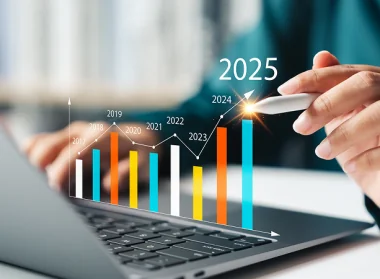The purchase-to-pay, otherwise known as procure-to-pay (p2p) process is one of the most important aspects of your business.
It handles your procurement process from the purchase requisition all the way through to when accounts payable pays invoices from vendors.
As such, your company has a lot of data about who you’re spending money with, the kind of money you’re spending, cash flow, working capital, and so on. Knowing how to make use of this data is critical to your success.
A lot of what you hear about analytics and big data sounds great.
But, if you don’t have the tools and the knowledge you need to make the most of the data from your analytics, it doesn’t do anything to help your business process.
Spend Data Analysis
Spend analytics is one of the most impactful areas of analytics and data. Your existing data allows you to better understand where you’re spending money, the number of vendors you’re using, and how much maverick spending you have.
Though working with this data is a large undertaking, it is one area where you can have a huge payoff thereby justifying the time spent working on spend analysis.
Without complete and accurate spend data and spend visibility you won’t really know how well your company is doing. Sure, you could be making a lot of money, but your profit margins may not be where they could be because of the inefficiencies in your processes and maverick spending.
Payment Processes
You can also use smaller chunks of data, or “little data” to make improvements to your payment processes.
Your existing data can help you improve your processing and efficiency when it comes to first-pass rates in processing purchase orders are invoices.
The data will show you insight into trends In your purchase process and working with vendors.
The data can show you underlying parts of the process. For instance, it can help you see if there are certain vendors that take longer to process because of additional steps you must go through.
Are your vendors complying with purchase order requirements? Are you regularly making your compliance requirements known to your vendors?
We’ve had clients in the past claim that they are 100% purchase order processing so that all invoices how to purchase order.
The real situation was that most of the purchase orders were issued after they received the invoice, and no purchase requisition documents were used.
This explains why the clients still had slow invoice processing times. You don’t always need access to big data to find smaller issues with your procurement.
Missing Discount Opportunities
Your organization may be missing out on ways to optimize for discount. If vendors are offering you a cash discount, you may wonder whether or not to take it here it one of the most important things about working with your procurement teen and analytics is to understand what types of suppliers allow discounts, what types of suppliers do not allow for them, and why that is.
When working with your vendors, look at the cash discount rate and its finance aspect to ensure it is as valuable to the organization as it appears to be.
With proper analytics in place in your ERP, you can easily spot cost savings at various places throughout your supply chain.
Improved Reporting Ability
The best purchase to pay analytics solutions will offer built-in reporting. Procure-to-pay software, like PLANERGY, comes ready to provide deep analytic insight. Without it, users have to spend extra time setting up reports.
If your data is spread across multiple systems that do not talk to each other, your team has to spend time gathering and compiling the data, and then making sense of it all before analysis can even begin.
With manual reporting processes, there is likely to be gaps in your data, leading to questions that you won’t be able to answer easily.
The most useful procurement analytics solutions provide automatic, built-in reporting.
You can choose from a number of preset reports and designate them to run whenever you need them to.
You can set the reports to go to the stakeholders who need to see them. You’ll also have the ability to create and save custom reports so things are easier to run in the future.
Because all the procurement master data goes into a single system that generates reports based on any number of variables such as vendors, invoices, purchase orders, and so on, there are no gaps in your data.
Your team doesn’t have to spend their time finding the data and putting it into a usable format.
Reports are more accurate and run faster, so your team can focus less on the administrative side of things and more on the value-added activities that can really impact the company’s bottom line.
Make Better Informed Decisions
Purchase to Pay analytics makes it much easier to become an insights-driven organization.
If you have silos of data it is hard to turn them into useful insights. If you and your team have to work together to dig up all the information and piece it together to find answers, or you’re trying to make sense of spreadsheets full of numbers but need data visualization to help you understand it all, then an analytics platform can help you.
With the data analysis, the platform makes it easier to glean insights from your company data so you can make data-driven decisions.
The improved decision making will help you grow your company, boost your profit margin, and reach your goals.




